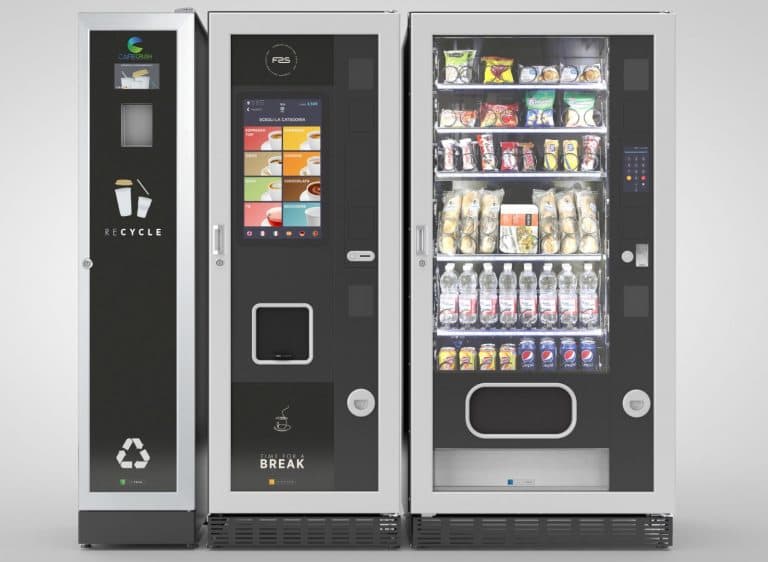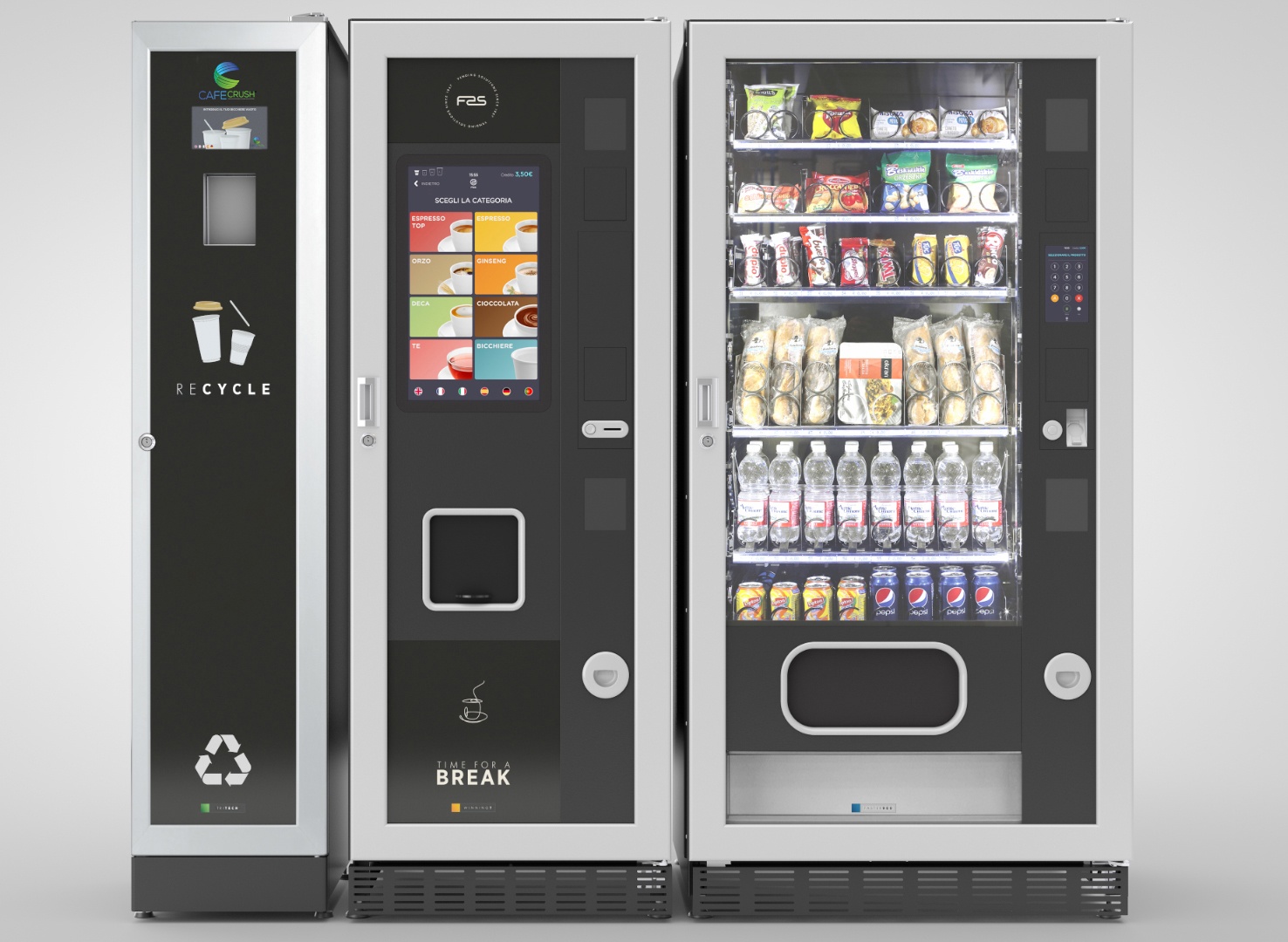
It’s no secret we are in the midst of a recycling sea-change. From all angles, we are bombarded by peer pressure and public consciousness that something needs to be done about waste – with a clear focus on plastic.
Regardless of which headline statement you read, it’s clear the tide has changed and if you’re not onboard, well, you’ve missed the boat.
So, what can we learn from the early adopters of on-site bottle deposit return schemes?
A few have recently hit the headlines, but solutions for on-site bottle (even cans and cups) deposit return schemes have been on the market for well over a decade. Each bring to the table their own advantages (and disadvantages), some of which we’ll run through below.
For the record: When we say on-site, we refer to a machine that is of small enough size to easily be added to your existing office / workplace furniture i.e. of similar size to your standard vending machines.
Short Recycling Chain
Many of the on-site bottle (can or cup) deposit return machines we’ve encountered are located in communal areas, such as staff break out rooms or canteens etc. Located in close proximity to product vending machines, the recycling chain is therefore extremely short.
This not only helps increase the likelihood of high return rates but also correct waste segregation.
Waste volume and associated waste management costs
If waste volume and associated waste costs are of particular interest to you, a bottle deposit return machine that compacts, rather than collects and sorts, would be most beneficial.
As the term suggests, a compactor reduces the volume of collected (deposited) waste, in some cases as much as 90%. Naturally, the consequential benefits to reduced waste volume is reduced waste storage and collection costs.
If a compactor is not for you, then another option would a machine that collects and sorts. Typically, these are automated machines that utilise advanced technology to identify, sort, collect and process.
We are not aware, and the time of posting this blog, of a machine that currently provides both solutions within an on-site sized package.
Cost (to purchase)
For an on-site solution which includes ticket incentivise technology, you’re looking at a price tag of anything from £4,000 to around £7,000. Many sellers offer a range of payment terms inc. lease.
In theory, you could install a bottle deposit return scheme in your place of work from as little as £30 per month (over a 5 year lease). If you’re not looking to incentivise deposited bottles (cans or cups), then you can take £10 per month off that cost.
If £4,000 or more would be deemed as CapEx spend, and lease options not acceptable, building a business case may help show that investment can drive ROI. One way to substantiate ROI, particularly with a compactor machine, would be to look at how much you would save on waste management costs. A quick back of a cigarette packet sum would be to shave 90% off your waste costs then work from there.
Waste Segregation
As a producer of waste you have a duty of care as set out in The Environmental Protection Act 1990. Correct waste management also makes business sense – let’s face it, correctly segregated waste has a higher value.
Bottle deposit return machines offer a new and innovative solution that facilitates, encourages and simplifies correct waste sorting at source.
It’s well known that design, identity and influence has a positive impact on behaviours and a bottle deposit return machine has all of these things in the bucket load. Many are branded, incentivised and clearly signposted to encourage correct waste segregation.
| Of course, there’s nothing to stop someone putting a bottle in the wrong aperture, or even putting a un-emptied bottle into the device. Naturally, this can and no doubt has caused machines to malfunction. In instances like this, business rely on the same psychology as mentioned above.
Identity and Influence– no one in a place of work wants to stand out as the guy (or girl) that broke the machine. One might be forgiven the first time, but continual malpractice can only be deemed as a disciplinary offence. Size (dimensions)Size matters – no more so in environments short of space. |
 |
On-site bottle deposit return schemes, whilst they may lack in heavy volume capacity, fit easily into your existing interior design and in some cases a simple plug and play with no techy set up.
As shown above, some are the same size as an average vending machine.
At present, it seems that you have 2 options: go small, or go big.
Go small – install a machine that is around the same size as a typical vending machine – like the ones you already have in work. Capacity volume will defer by device and it is recommended to liaise with the manufacturers or resellers for exact numbers but as a quick reference guide a capacity of around 400 bottles or cans, or 1900 cups sounds about right.
Go big – these tend to be in supermarkets, for high volume deposits – some of which (much like the coin counting machines) allow users to deposit in bulk.
Fraud and Misuse
As with anything in life, there’s always going to be those that try to out-smart the system. This is a risk early adopters face as products are fine-tuned and chinks in one’s armour is ironed out. A recent example of this was in Germany where a 27-year-old faced court on two fraud charges after allegedly making €1.2m through illegally manipulating machines.
| These things do happen, but I believe in this case the machines were not located in an on-site environment. The risk of this happening in a place of work is greatly reduced. Peer pressure, CCTV or risk of disciplinary is a sufficient deterrent in most cases.
The same can be said for those repeatedly misusing the machines i.e. putting bottles where cups should go, or even entering un-emptied bottles. Clear signage and instructions, of course, should provide the users but for persistent offenders, more Brand Image / Marketing:Internet connectivity has made many bottle deposit return machines the perfect platform for branding and marketing communications. With internet connectivity comes endless possibilities to promote. Some devices allow messages to be altered remotely and with real time data, more relevant marketing communications can be delivered. |
 |
Keen to learn more?

